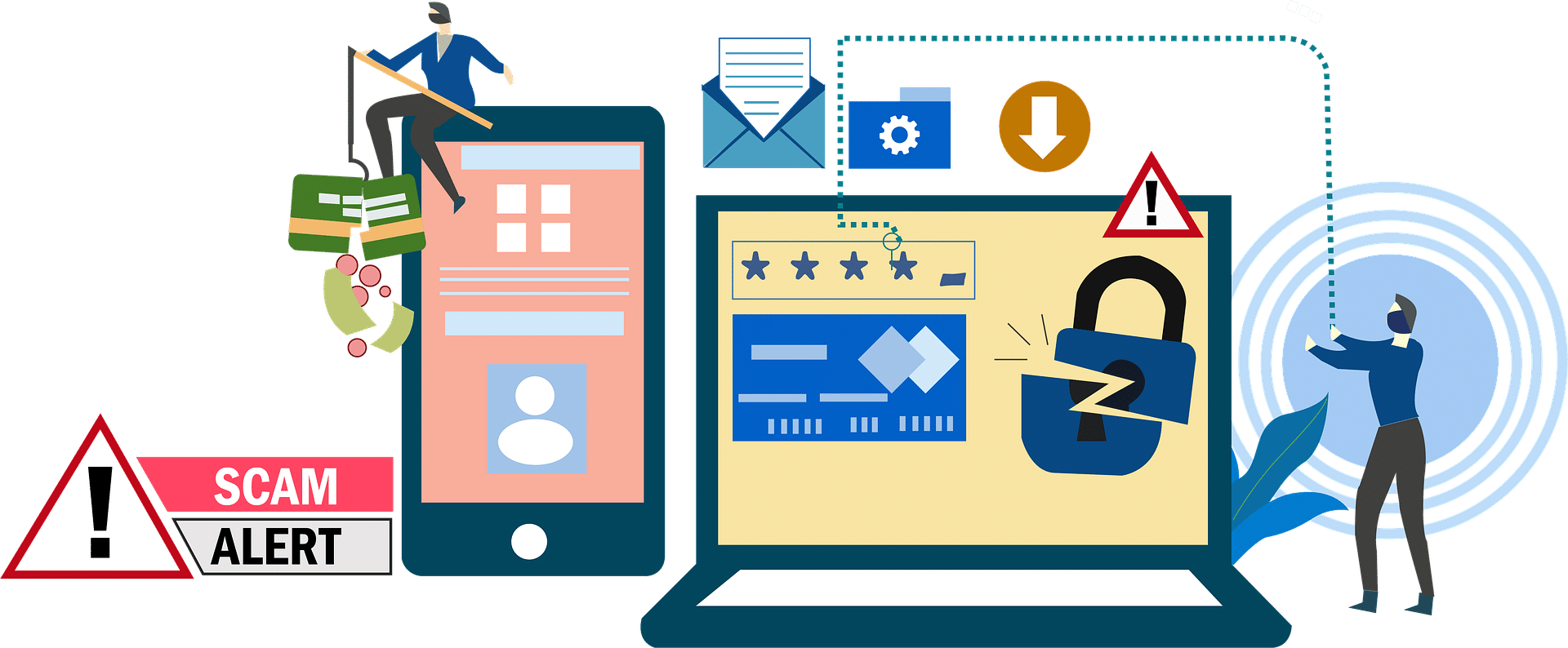Recognizing and avoiding phishing e-mails
Phishing e-mails are a common form of online scam that trick people into disclosing sensitive information or downloading malware. Every day, millions of people fall for these types of attacks, leading to financial losses, identity theft, and other types of fraud. In this blog post, we will discuss the different types of phishing e-mails and provide tips on how to recognize and avoid them.
What is a phishing e-mail?
A phishing e-mail is a fraudulent message that appears to come from a legitimate source, such as a bank, a government agency, or a well-known company. The purpose of these emails is to trick the recipient into providing sensitive information, such as login credentials, credit card numbers, or other personal information. In some cases, phishing e-mails may also contain malicious links or attachments that, if clicked, can install malware on the recipient’s computer.
Types of phishing e-mails
- Brand imitation: This type of phishing e-mail imitates a well-known brand and is designed to make the recipient believe the message is legitimate. For example, the email may appear to come from a popular online retailer or financial institution and may include a fake login form or link to a fake website.
- Urgency scam: This type of phishing e-mail creates a sense of urgency and attempts to pressure the recipient to take immediate action. For example, the email may claim that the recipient’s account has been compromised or that they need to update their information immediately to avoid having their account suspended.
- Scams with attachments: This type of phishing e-mail contains an attachment that is supposed to represent a report, an invoice, or a confidential document. However, when the attachment is opened, it may install malware on the recipient’s computer.
- Scams with deceptive links: This type of phishing e-mail contains a link that appears to go to a legitimate website, but actually redirects the recipient to a fake site where they are asked to enter sensitive information.
How to recognize a Phishing e-mail
- Check the sender’s email address: Phishing e-mails often come from a sender that looks like, but is not exactly the same as, the legitimate sender. For example, the email may come from a domain that is close to the real domain but slightly different, such as “paypal.com” vs. “paypa1.com.”
- Watch for typos and bad grammar: Phishing e-mails are often hastily written and may contain typos, bad grammar, and other errors.
- Be skeptical of urgent requests: If an email urges you to take immediate action, such as updating your account information or giving you your password, be cautious. Legitimate companies and organizations typically do not send emails with a sense of urgency.
- Check the link before clicking on it: Before clicking on a link in an email, hover your mouse over the link to see where it goes. If the link does not go to a legitimate Web site, don’t click on it.
- Don’t provide sensitive information: Legitimate companies and organizations will never ask for sensitive information, such as passwords or credit card numbers, via email. If an email asks for this kind of information, it is probably a phishing attempt.
Conclusion
Phishing e-mails are a common form of online scam that can lead to financial losses, identity theft, and other forms of fraud. By understanding the different types of phishing e-mails and following the tips in this blog post, you can better protect yourself from these attacks. Always watch out for emails that give a sense of urgency, contain typos and poor grammar, and ask for sensitive information. Before clicking on a link or downloading an attachment, check that the sender is legitimate and that the website is not fake. If an email seems too good to be true or too urgent to ignore, it probably is.
By following these tips, you can significantly reduce your risk of falling for a phishing scam. However, it is also important to regularly update your security software and keep yourself informed about the latest scams and tactics of cybercriminals. By staying vigilant and informed, you can keep your online identity and assets safe.
Get in touch
Learn more about our phishing test options here. Is this not what you’re looking for? Don’t panic, we of course also work on a per-item basis. Please contact us using the form below. We’ll be happy to answer all your questions!

